In the world of succulent enthusiasts and plant lovers, Euphorbia milii stands as a charismatic and resilient gem. Known by its common name, the Crown of Thorns plant, this succulent species captures attention with its striking appearance and its ability to thrive in challenging conditions. Native to the arid regions of Madagascar, this Euphorbia species has earned its place as a favorite among gardeners and collectors worldwide. In this article, we delve into the captivating world of Euphorbia milii, exploring its appearance, characteristics, care requirements, and cultural significance.


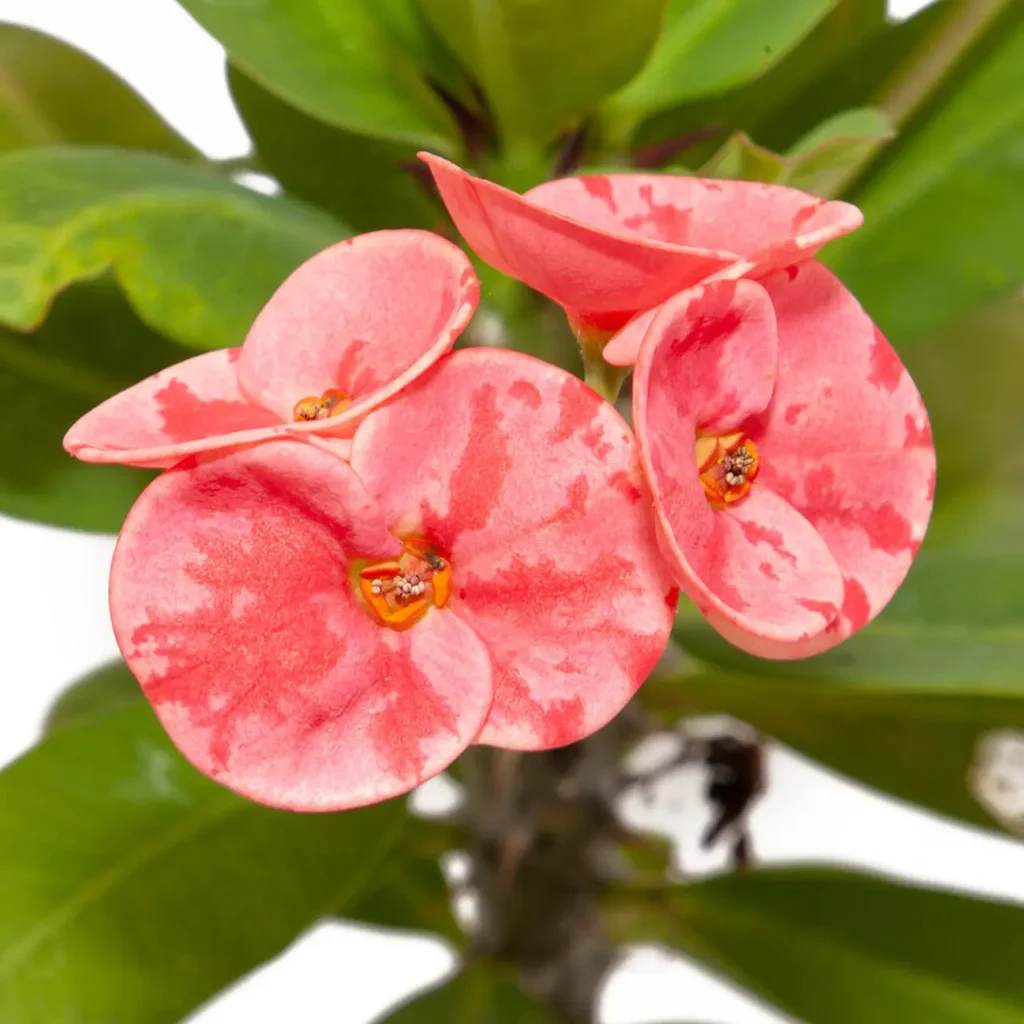
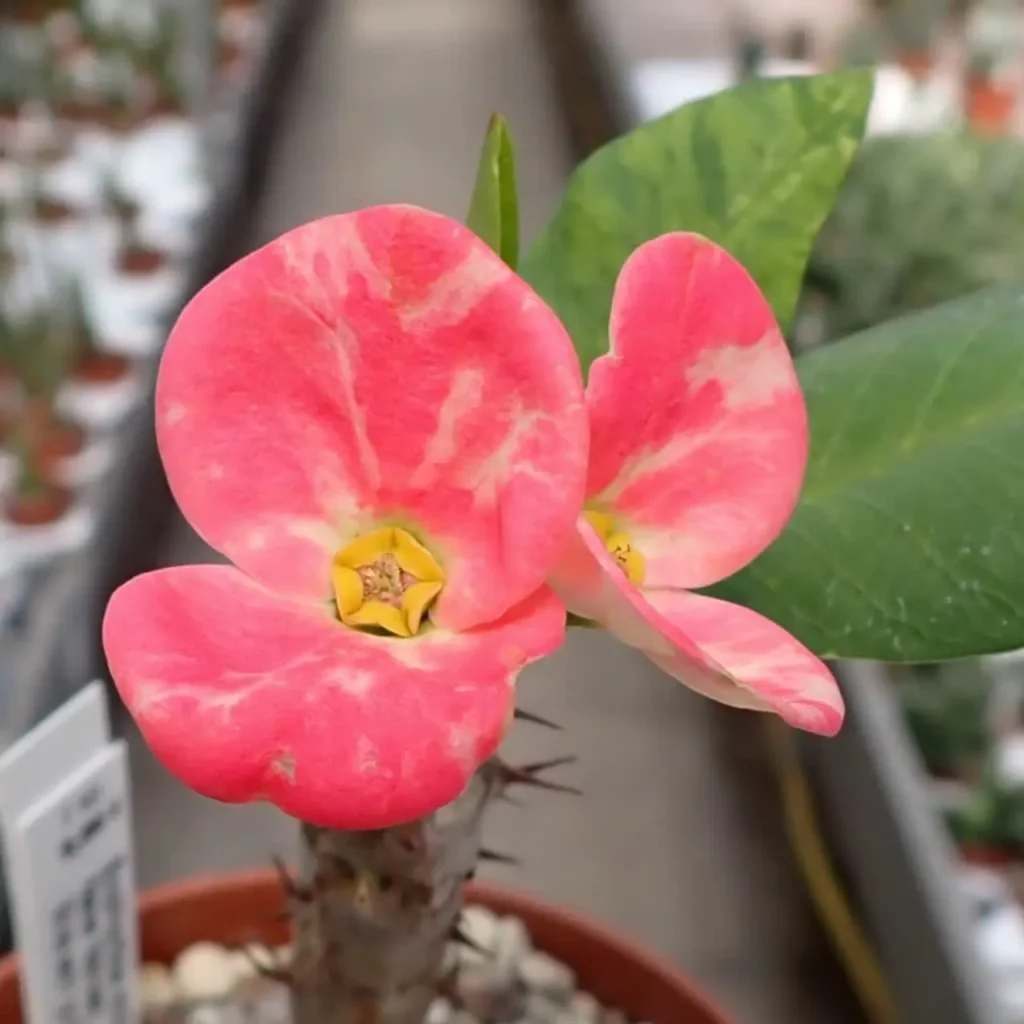
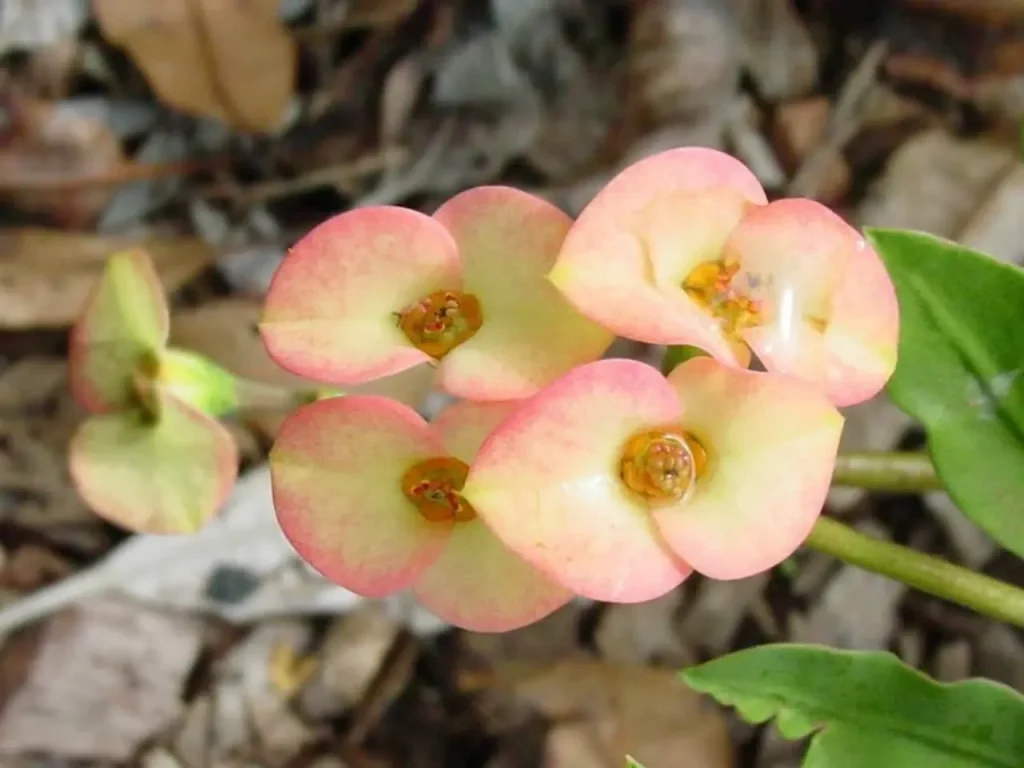
Appearance and Characteristics
Euphorbia milii is a member of the Euphorbiaceae family, a diverse group that includes various succulent and cactus-like plants. It is a spiny, low-growing shrub that can reach heights of up to 1 meter (3 feet) under optimal conditions. The plant’s most distinctive feature is its long, sharp thorns, which line the branches and give rise to its common name, “Crown of Thorns.”
The succulent leaves are small, oval-shaped, and usually sparse along the stems. The real showstopper, however, is the plant’s colorful bracts that surround its small, inconspicuous flowers. The bracts can vary in color from vibrant red, pink, orange, and yellow, often creating a crown-like display that contrasts beautifully with the plant’s thorny stems.
The color of the Euphorbia milii
Euphorbia milii, commonly known as Crown of Thorns or Christ Plant, is a succulent plant that produces colorful bracts around its small, inconspicuous flowers. The true flowers of Euphorbia milii are actually small and located within these colorful bracts. The plant comes in various colors, but the most common colors for the bracts include:
- Red: Red is one of the most common colors for the bracts of Euphorbia milii. The red can range from bright and vibrant to deeper shades of crimson.
- Pink: Pink-bracted varieties of Euphorbia milii are also popular. The pink can vary from pale pastel pinks to richer, darker pinks.
- Yellow: Some varieties of Euphorbia milii produce bracts in shades of yellow. These can range from light yellow to more intense golden hues.
- Orange: Orange-bracted Crown of Thorns plants are also available. The shades of orange can vary from soft peachy tones to deeper oranges.
- White: While less common, there are varieties of Euphorbia milii that produce white bracts. These can add a clean and elegant touch to your collection.
- Multi-Colored: There are also cultivars of Euphorbia milii that feature multicolored bracts, combining two or more colors in unique patterns.
The colorful bracts of Euphorbia milii make it a popular choice for indoor and outdoor ornamental plantings. However, it’s important to note that the milky sap of Euphorbia plants can be irritating to the skin and eyes, so caution should be exercised when handling them. The plant’s vibrant and long-lasting bracts, coupled with its succulent nature, contribute to its popularity as a low-maintenance and visually appealing plant option.
Cultural Significance
Euphorbia milii holds cultural and symbolic significance in various regions. It is associated with religious narratives and is said to symbolize the crown of thorns worn by Jesus during the crucifixion in Christian traditions. This connection to a powerful spiritual story adds a layer of depth to the plant’s identity, making it more than just a beautiful ornamental.
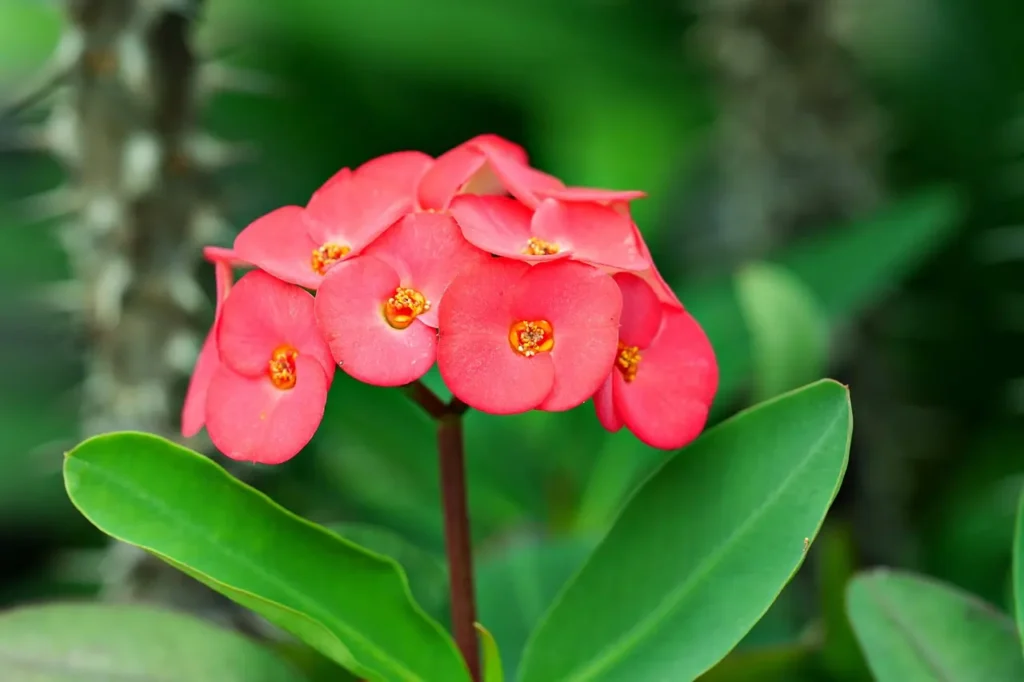
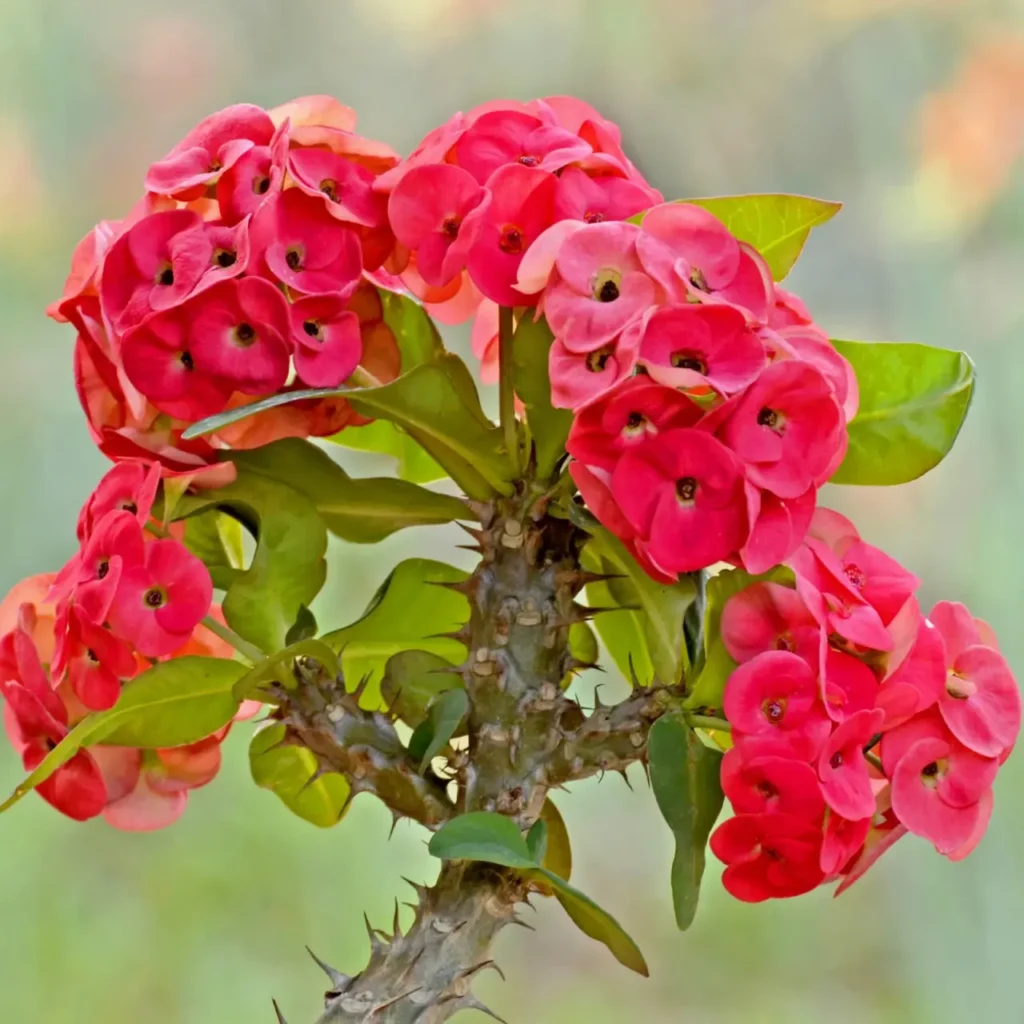


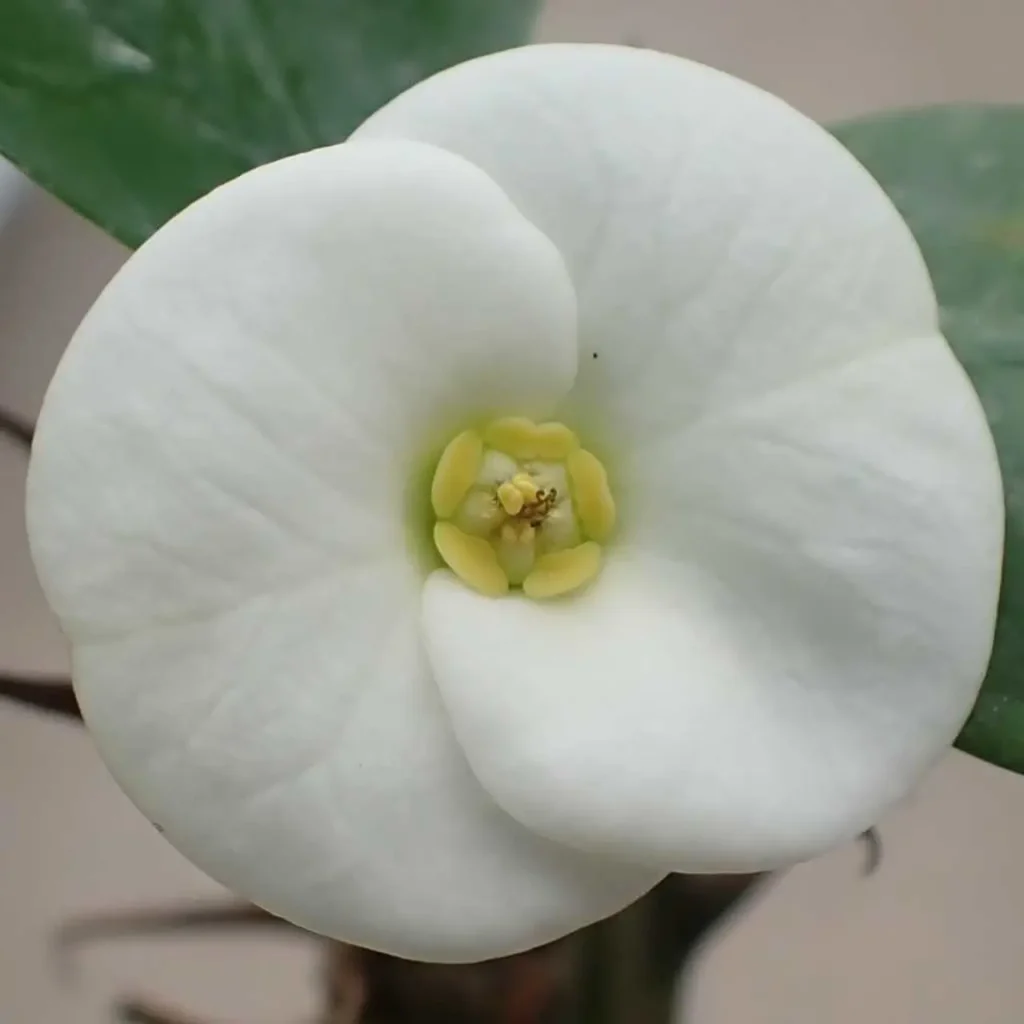
Care and Cultivation
Caring for Euphorbia milii requires attention to its specific needs, as this succulent hails from arid regions with distinct growing conditions:
- Sunlight: Euphorbia milii thrives in bright, direct sunlight. Place it near a sunny window or in a spot with plenty of natural light.
- Soil: Use a well-draining cactus or succulent potting mix to prevent waterlogging and root rot.
- Watering: Allow the soil to dry out between waterings. Water sparingly during the growing season (spring and summer) and reduce watering during the dormant period (fall and winter).
- Temperature: Keep the plant in a warm environment, avoiding temperatures below 50°F (10°C). Protect it from frost and cold drafts.
- Fertilization: Feed your Euphorbia milii with a balanced, diluted liquid fertilizer during the growing season, typically every 4 to 6 weeks.
- Pruning: Regularly remove spent flowers and dead or yellowing leaves to encourage new growth and maintain the plant’s appearance.
Caution: It’s important to handle Euphorbia milii with care due to its thorns and the milky sap it produces. The sap can be irritating to the skin and harmful if ingested.
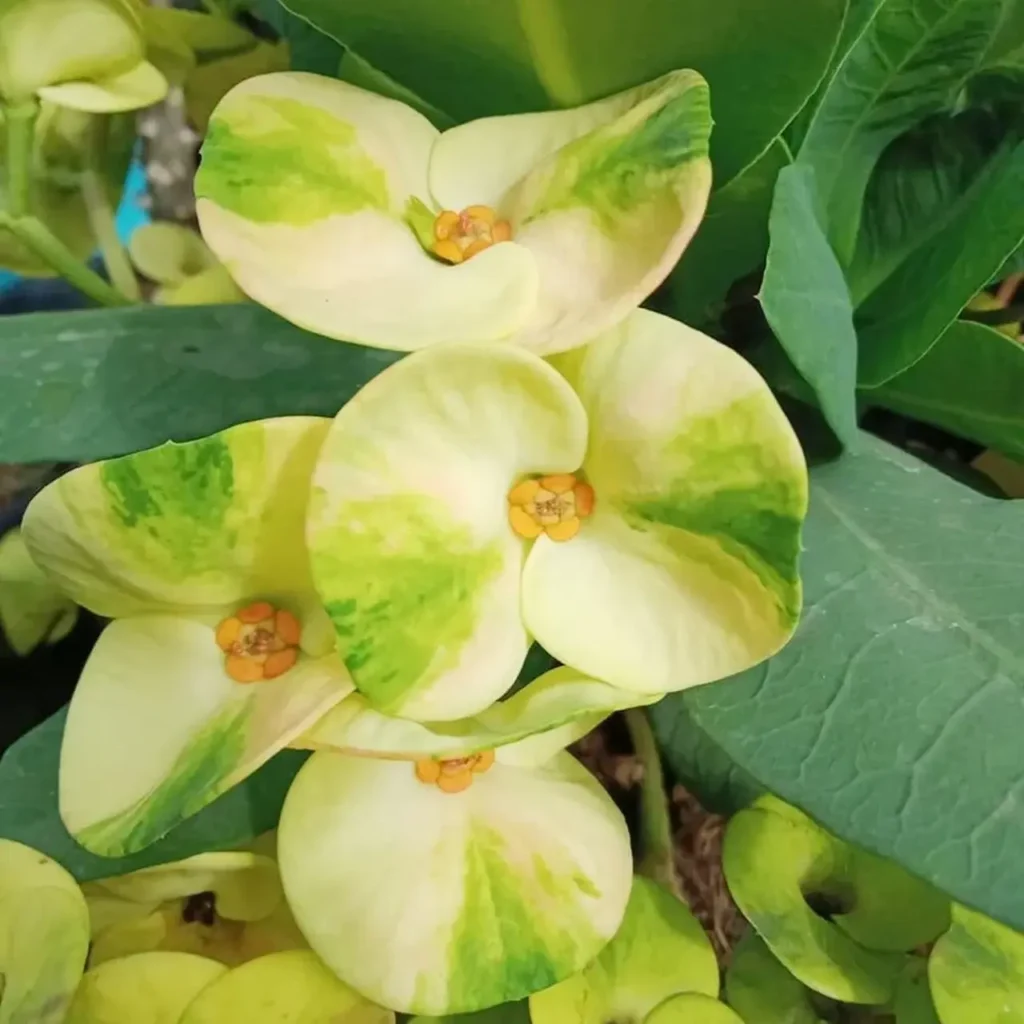
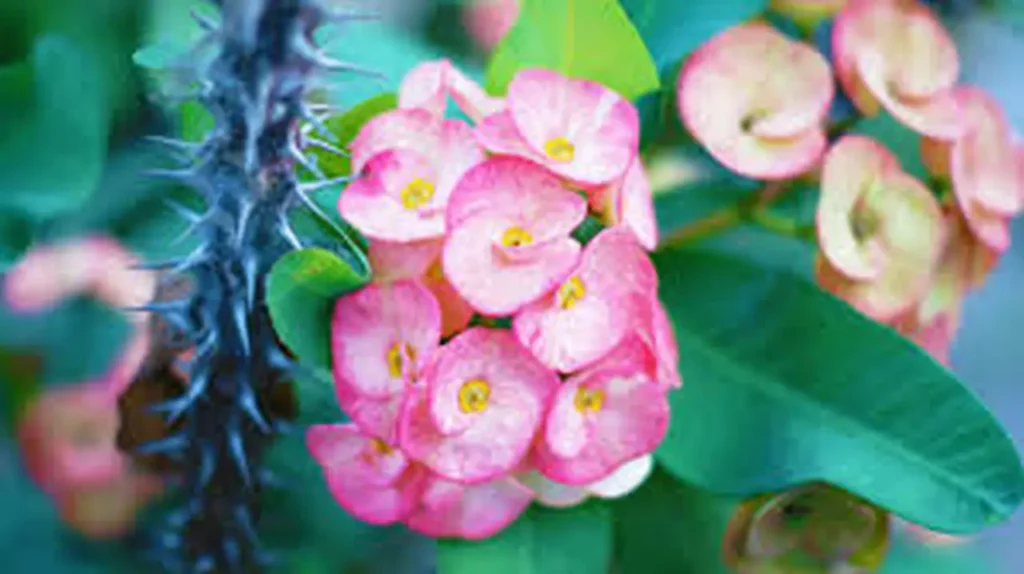
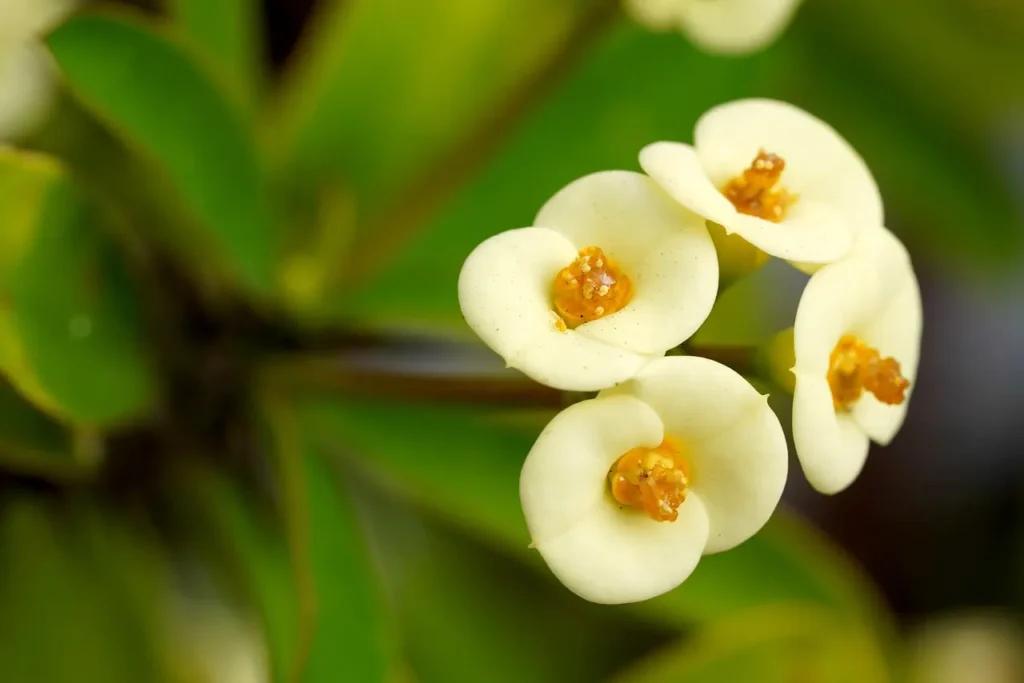
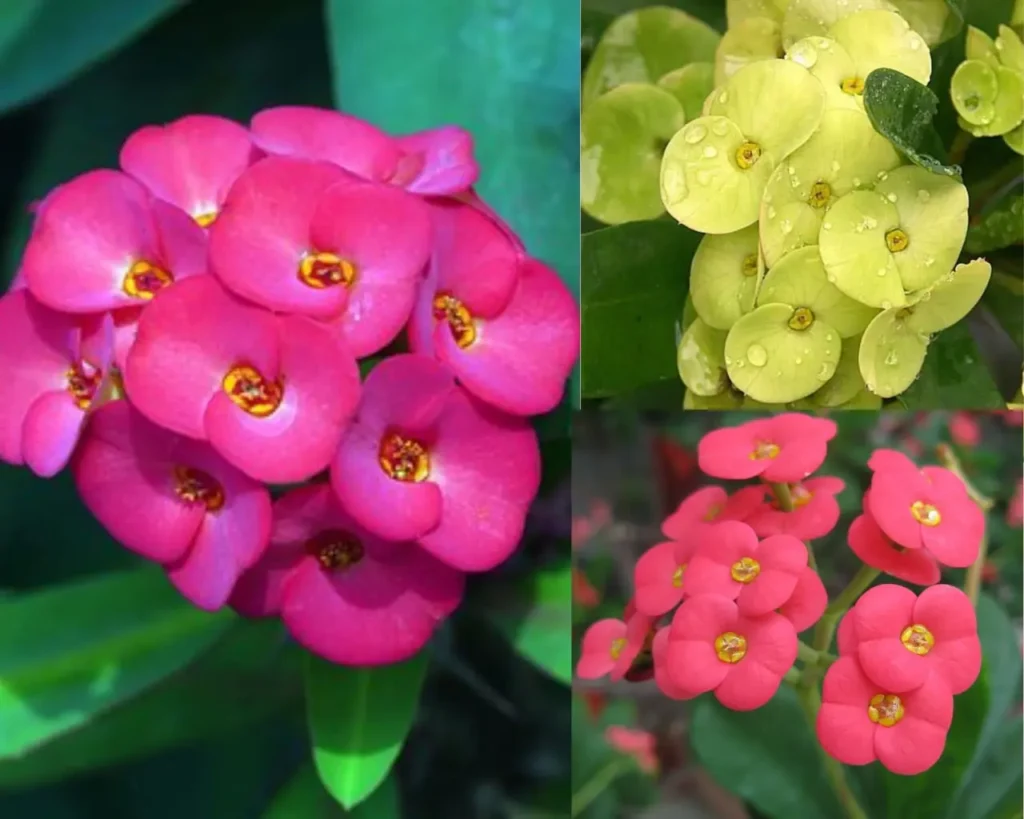
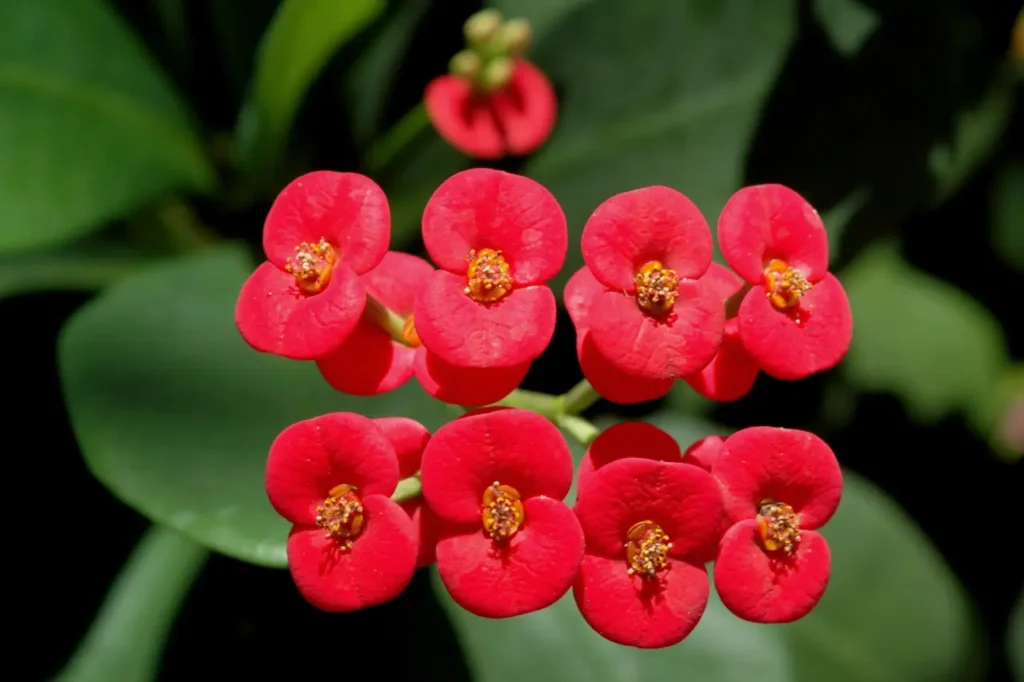
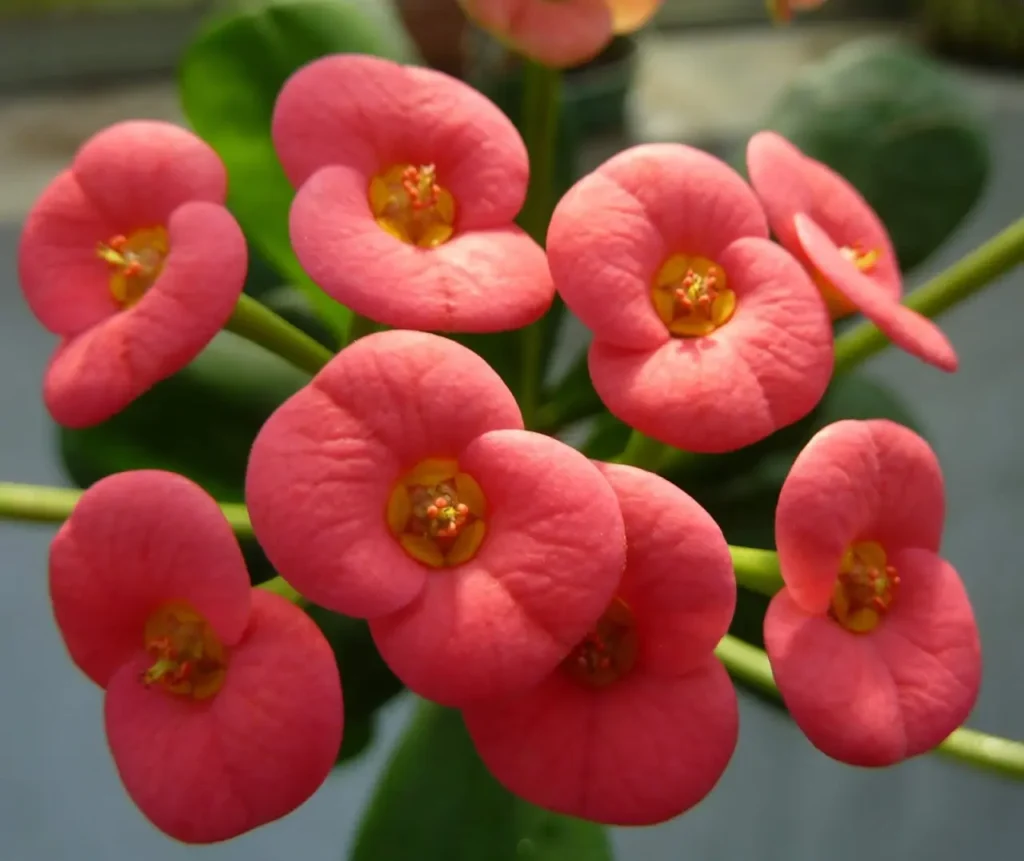
Euphorbia milii, the Crown of Thorns plant, brings a unique combination of beauty, symbolism, and adaptability to the world of succulents. Its vibrant bracts and intriguing history make it a striking addition to gardens, homes, and collections. As we explore the captivating allure of Euphorbia milii, we are reminded of the way plants can carry cultural significance and tell stories that transcend their physical appearance. By providing the right care and attention, succulent enthusiasts and gardeners can enjoy the resilient and meaningful presence of the Crown of Thorns plant in their living spaces, fostering a connection to both natural beauty and historical narratives.








